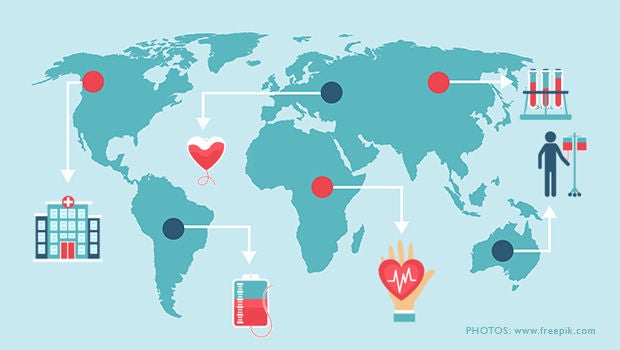
How the Gates Foundation’s innovative and multi-sectoral approach reduces the burden of global epidemics
The African “meningitis belt” – a region of 21 countries in sub-Saharan Africa – used to carry the largest burden of the disease in the world. In 1998, new cases peaked at over 250,000. A tenth of patients died and many were left disabled.
Today, meningitis in the region is largely under control, thanks to a large-scale multi-sectoral project backed by the Bill and Melinda Gates Foundation. Using an innovative partnership approach, the foundation took a coordinated approach to consolidate efforts by global organisations, philanthropies and non-governmental organisations (NGO).
Where others can’t or won’t
The Gates Foundation believes that “all lives have equal value”. It adopts four missions to achieve its vision of a world where everyone has the opportunity to live a healthy, productive life:
1. Ensure more children and young people survive and thrive
2. Empower the poorest, especially women and girls to transform their lives
3. Combat infectious diseases that particularly affect the poorest
4. Inspire people to take action to change the world
In a talk organised by the SingHealth-Duke NUS Global Health Institute, Dr Christopher Elias, the foundation’s President of Global Development, shared its “Innovative approaches to solving global health challenges in low- and middle-income countries”.
According to Dr Elias, the foundation focuses on areas of greatest, unmet needs. As a large philanthropy with a higher tolerance for failure, they are able to take risks where others can’t or won’t. In addition, they incentivise the market to solve the biggest problems for the poor.
A meningitis vaccine that costs less than 50 cents?
“Meningitis is a solvable problem, but in Africa the market isn’t working for the poor,” said Dr Elias.
In 2001, the foundation awarded a 10-year, US$70 million annual grant to PATH, an international, non-profit organisation working to improve global health, in partnership with the World Health Organisation (WHO).
The team was tasked to develop and deploy an affordable vaccine for meningitis A in Africa. Their challenge? To develop it at not more than US$0.50 per dose.
A check with the vaccine industry confirmed the possibility of a low-cost vaccine using the most efficient coagulation method and the cheapest ingredients. However, manufacturers were unwilling to modify their processes to accommodate the new formula.
The team found a partner in the Serum Institute of India, and sourced for ingredients from other manufacturers. It further contracted technology from the US Food and Drug Administration and brought scientists to India to effect the tech transfers.
The project eventually became a complex, international partnership involving more than 30 organisations. By 2010, a low-cost vaccine called MenAfriVac® was ready to be rolled out.
“Since implementation, we have prevented 1.3 million new cases of meningitis and averted many deaths and disabilities, saving families and the community from emotional and financial strains. Public health resources were also freed up to deal with other pressing needs,” he said.
The success of the project hinged on the guaranteed funding provided by the foundation which gave assurance to the team and accelerated the vaccine development. By bringing together partners from different sectors and across nations, the foundation’s approach proved viable.
To the team’s credit, this project eliminated one of the most significant health problems in Africa, and they were able to achieve this at US$0.40 per dose.
Taking the sting out of malaria in Asia Pacific
Dr Elias cited another example closer to Singapore to show how multi-sectoral partnerships are working. In Asia Pacific, the foundation is a partner of the Asia Pacific Leaders Malaria Alliance (APLMA) and the Asia Pacific Malaria Elimination Network (APMEN) which aim to stamp out malaria in the region by 2030.
Like the Meningitis Vaccine Project, APLMA / APMEN engages multi-sectoral partners from governments, academia, research institutes and NGOs. A scorecard for countries helps to benchmark progress, establish accountability and encourage cross-learning among countries.
Their concerted efforts are paying off, as seen by the decreasing cases of malaria in Asia Pacific vis-à-vis global numbers. For example, the number of cases has dropped by 28% in India and 53% in Myanmar between 2015 and 2018.
Whether in Africa or Asia, the Gates Foundation’s partnership approach is making headways against global diseases. It uses the same strategy in upstream efforts such as epidemic preparedness and research on mosquito-borne diseases to prevent costly outbreaks in future.
Fueling its efforts to improve global health is the foundation’s ability to aggregate risks and align resources by pulling different forces towards the same goal. Clearly, their approach is paying off.













 Get it on Google Play
Get it on Google Play